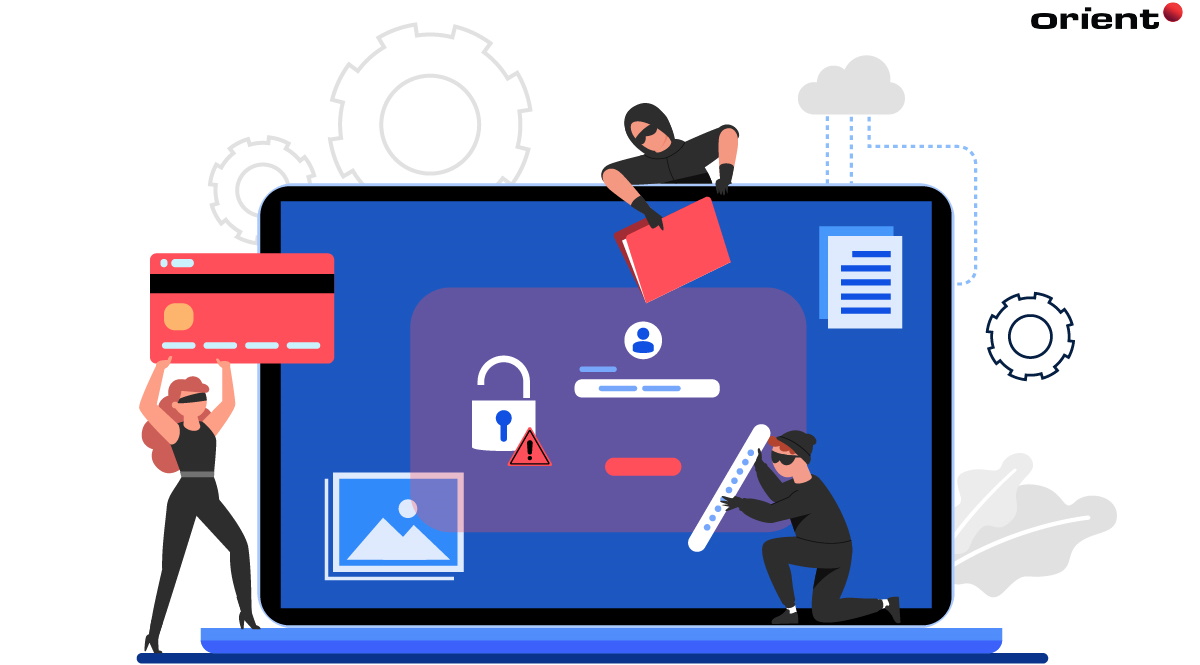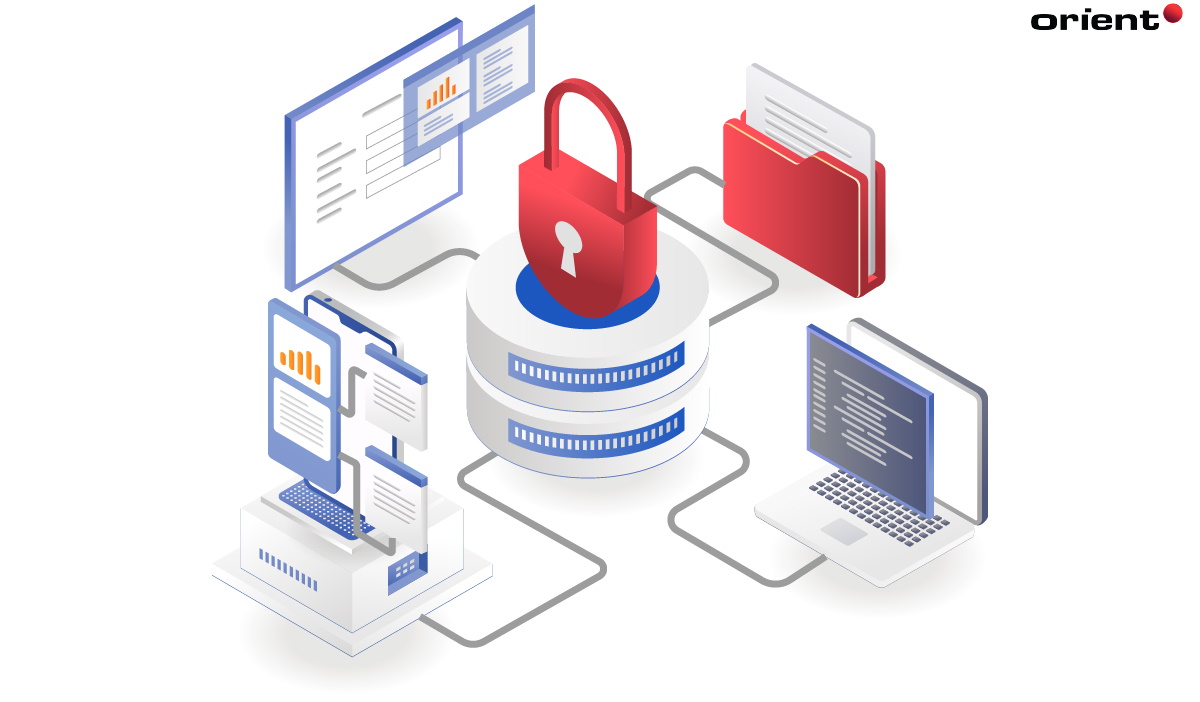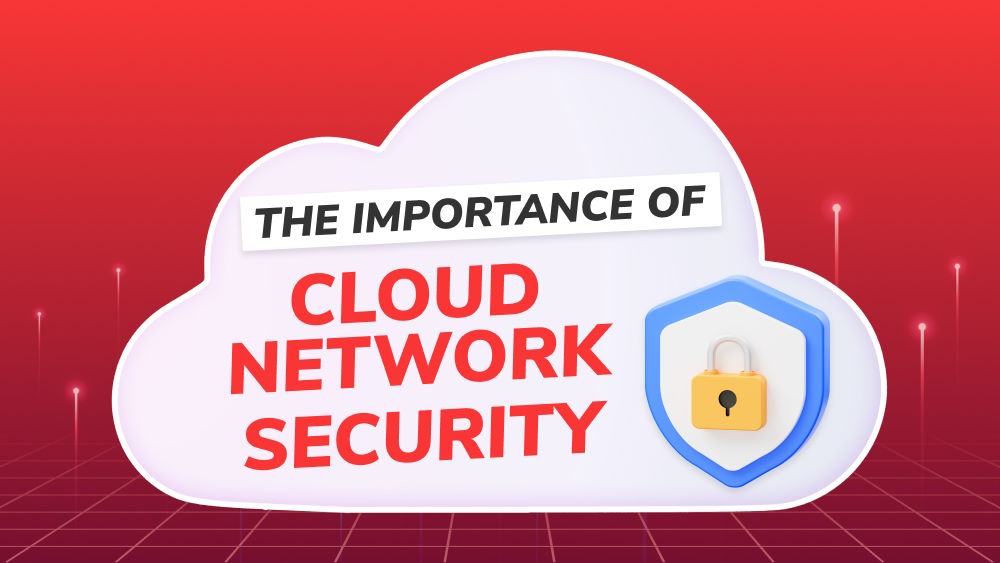What Are the Best Fintech Security App Solutions?

Content Map
More chaptersBuilding a new application from scratch can be a complex, time-consuming, and stressful task. And these factors can be amplified a lot when the time comes to build a fintech app. These applications are used to manage all kinds of financial tasks, such as transferring funds from one bank account to another or invoicing a client.
The result is that these kinds of applications are more prone to cybersecurity risks than most due to a large amount of sensitive data they gather and store. And it is for this reason that any fintech app you plan to build should be as secure as possible.
But what are the latest fintech app security solutions, and how should you implement them into your software development project? Read on to find out – and more.
What Is a Fintech App?

A fintech app is a type of application that you use to perform one or more tasks that relate to the management of your finances.
One such example would be a banking app that you use to check your account balance, transfer money between accounts, pay an individual or service provider, or request a new debit card. Another example would be a stock exchange app, which you might use to review your current stock exchange portfolio, buy and sell the stock, and receive trading tips.
Put simply, any application that revolves around the management of one’s finances can be considered a fintech app.
And just like any application, fintech apps can be developed for your web browser or as a standalone app to be downloaded and used on your mobile device or desktop workstation. Fintech apps must also be updated regularly so as to keep up with the latest regional compliance standards and protect users from the latest cybersecurity threats.
Why Are Fintech Apps So Vulnerable to Cybersecurity Risks?
Fintech apps are particularly susceptible to cybersecurity risks because of the large amount of sensitive personal and financial data they collect.
These apps gather and store all kinds of personal and financial data such as invoices, transaction history, personal customer details (i.e., first and last name, home address, email, phone number, username, and password), payment methods used, and past vendors the customer has interacted with.
Furthermore, they store a lot of this kind of data, which makes them an enticing target for malicious actors, particularly those that wish to prey on high-value customers that use fintech apps to manage – what they hope to be – a large amount of money or stock.
High-Profile Cybersecurity Incidents

Just how vulnerable are fintech apps to cybersecurity risks?
According to independent research by Kaine Mathrick Tech, the number of cybersecurity incidents that occurred in the Australian financial sector from July 2019 to June 2020 was 95. These incidents involved financial institutions and banks and the obtaining of sensitive customer information such as bank account details and credit card data.
A survey by authID, a provider of secure, mobile, biometric authentication, revealed in 2021 that up to 84 percent of respondents expected to increase their investment in IT security, including identity authentication, over the next year as well. These figures indicate that cybersecurity is a major concern of the financial services industry and that most companies plan to invest heavily in bolstering their defenses in the coming years.
There have also been several high-profile data breaches of financial institutions around the world, including Greece’s major banks, which had to cancel 15,000 cards after a travel website breach, and the banking division of the South African Post Office having to replace 12 million bank cards following a security breach.
And while customer data breaches in the fintech sector can occur outside of the apps that customers use, it is still vital that apps of this nature are equipped with the latest cybersecurity measures so as to minimize the risk of unauthorized access and data breaches as much as possible.
Fintech App Security Solutions to Use
If you are planning on building a Fintech app, then you will want to include the latest cybersecurity measures to protect your customers and prevent their sensitive personal and financial data from getting into the wrong hands.
There are many ways to keep fintech apps secure, and how you go about implementing cybersecurity into your app depends on a number of factors. Who is your target audience? What kind of personal and financial data will you be collecting and storing? Do you require different levels of permission access so that users can only access the features and information that they need to use the app properly? These are just some of the many questions to consider when building a secure fintech app.
Whether you are developing a fintech app in-house or outsourcing to a Software Development Company, your dedicated software team should take the time to understand your requirements and prepare a project scope that accurately predicts the amount of time, money, and labor required to complete that project. Below is a quick breakdown of the most common fintech security solutions out there.

Data Security Encryption
Data encryption is the process of encoding information into a code that requires special keys to decipher into a readable format. Encryption algorithms come in different levels of complexity, with the most common being:
- RSA: A highly secure asymmetrical algorithm that is available in both public and private encryption keys.
- 3DES: A commonly used form of encryption for credit card PINs. 3DES divides data into 64-bit blocks and then ciphers each bit-block three times. However, as of 2022 onward, 3DES is gradually being phased out in favor of more secure algorithms such as AES-256.
- Twofish: A symmetric encryption algorithm that is free to use and divides data into 128-bit blocks, making it one of the more secure encryption protocols out there, albeit at the cost of being a bit slower than Rijndael.
Depending on the type and nature of your fintech app, your software development team will decide which form of customer data encryption is best for your app and explain why that specific type is the most suitable choice.
Firewalls
A firewall is a tool that monitors incoming information and prevents malicious data or actors from entering the system. Think of it as a wall that sits between a safe and everything else on the outside. It looks at information coming in and determines whether the information is safe or not to pass through.
When properly developed for a fintech app, a firewall can help automatically prevent internal and external threats from wreaking havoc on the app and gaining sensitive personal or financial data from a customer. This includes preventing a malicious actor from modifying a customer’s account details or preventing them from seeing such information in the first place.
Role-Based Access Control
Different types of users have different needs when it comes to interacting with an app. For an e-commerce app, a store owner will need access to many ‘back end’ functions of the store, such as updating product listings and descriptions and adjusting pricing structures, while a customer will want to be able to add/remove items from their basket, use a third-party service like PayPal to pay for their purchase, and submit a question to customer service for support.
This same logic applies to fintech apps, where not every user will want (or should even have) the same level of access permissions across the board. For this reason, it is vital that your fintech app has some form of role-based access control.
For instance, your app may have assigned roles such as administrator, customer, IT specialist, technician, and customer support staff. Each role will require varying degrees of access to perform their intended tasks and to minimize the risk of the wrong person having access to the wrong sensitive personal or financial data.
This way, the vast majority of employees and customers won’t have direct access to sensitive data, and those that do must meet very strict requirements to have that sort of access in the first place.
Precise Authentication Technologies
Forcing your users to have strong, secure passwords is not enough to prevent internal and external intrusions. You must go a few steps further so as to increase the number of steps a user must take to access the app without making the process too cumbersome or time-consuming. Fortunately, with data protection, this is something that a professional security testing team can help with.
One-Time Password (OTP)
One way to enhance the authentication process is to have a One-Time Password system (OTP). This means that each time a user tries to access the app, it will generate a unique, limited-time, and one-time use password that the user must input in order to access the app.
OTPs can also be requested prior to completing a transaction to ensure that the current user is who they say they are.
Reduced Log-in Session Times
Another effective approach is to have short log-in sessions. This is where you restrict the amount of time that a user can spend inside the app before they are booted out and must log back in again. This gives hackers limited time to access the information that they may want or need and potentially not enough time to do other tasks like transfer funds.
Adaptive Authentication
An adaptive authentication is an advanced form of Multi-Factor Authentication (MFA), which takes the traditional approach one step further by analyzing a user’s behavior to detect suspicious activity – even after logging in.
This means that, instead of confirming the user’s identity just once at the login screen, the system will carry out real-time assessments throughout the session as well. The system may ask the user to perform a biometric scan, type in a code sent via SMS, or use a one-time password to continue to use the app.
These measures are designed to catch hackers that may have been able to successfully login but who then do not have the means to satisfy other forms of verification that the system comes up with during a session.
DevSecOps
When developing a fintech app, it is vital that cybersecurity is at the forefront of the developer’s mind early in the project.
The way to achieve this is to have a DevSecOps pipeline as part of the Software Development Life Cycle (SDLC). It involves making decisions about cybersecurity, early and often, during each stage of development, from planning to design and coding to testing.
This way, cybersecurity gaps and vulnerabilities can be detected and resolved early, and the foundations of a strong cybersecurity system can be put in place before the entirety of the app comes together. Having a DevSecOps pipeline will also help the development team keep up with fintech security compliance standards, including region-specific standards like GDPR for Europe.
This is far better than implementing cybersecurity later in development, where the essential UI elements, features, and other functions have already been built and incorporated into the app. Making last-minute changes may require undoing a lot of hard-earned work, increasing the risk of the project going missing the deadline and exceeding the budget.
Make Cybersecurity a Priority for your Fintech App

As the fintech sector continues to expand and become more complex, so too should the protected data management systems that are put in place for fintech apps.
This is also evident in the large amount of sensitive personal and financial data that fintech apps preserve. As this critical data grows in volume and type and comes from a wider range of sources, this increases the number of vulnerability points for a data breach to occur.
By prioritizing cybersecurity early in the development of your fintech app, you will increase the odds of having a safer, more secure, and reliable app – one that your customers will be happy to use and will be confident that their data is safe.
As a result, your fintech app is more likely to acquire more customers, and your business may generate a stronger sense of trust with your customer base as well.







